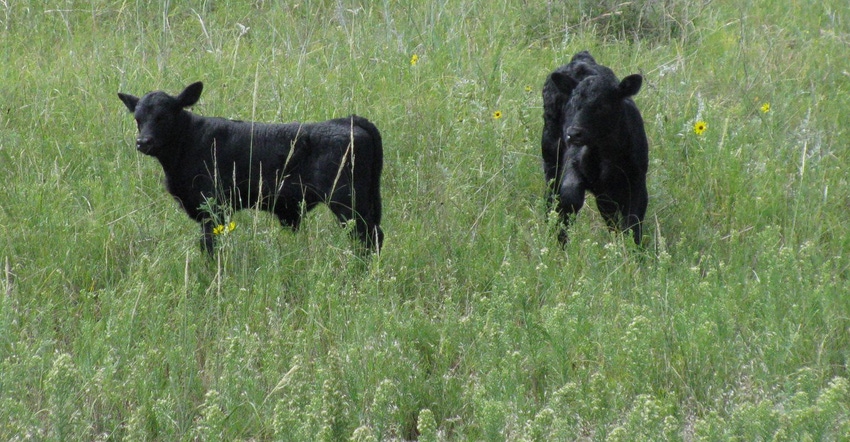January 19, 2017

If producers select bulls for their cows based on lower birth weights, are they short-changing themselves? There is a lot of buzz around the industry about how low is too low when selecting bulls for birth weight. No one wants to pull a calf, but is there a point where selecting a bull for too low of a birth weight is going too extreme?
Birth weight and yearling weight are highly correlated traits. "When generations upon generations spread bulls with heavy birth weight or light birth weight stacked upon each other, we have defeated those antagonisms," says Jerry Connealy of Connealy Angus in Whitman. "That correlation is still real, and it's still there. I wouldn't recommend to anyone stacking light birth weight on top of light birth weight. Piling negative upon negative, you will eventually get a finer boned, frailer calf that will be a less rugged animal in the end," he says.
Producers should select bulls for birth weight based on what the end point is for their cattle, according to Loren Berger of Berger's Herdmasters in North Platte. "I visited several feedlots who wanted to feed my cattle, and they all told me they want to take the Continental cross cattle to 1,450 to 1,500 pounds," he says. "Most 65-pound birth weight calves will struggle to get to that, and still have an acceptable yield grade."
"I feel most producers are making a big sacrifice if they take low birth weight to the extreme in the mature cows," Berger says. "A cow can give birth to a heavier calf, have the calf get up and nurse right away, and do all this in a harsh environment. If these cows are limited to giving birth to a 65-pound calf, that calf is a loss. I think 85 to 90 pounds may be more ideal in most situations," he says.
"In this industry, we are guilty of being plungers. We can't moderate," Connealy says. "We think if a lighter calf is good, then an even lighter one is better. We have to stop somewhere. A cow can have a calf that weights 85 to 90 pounds, and we can still use the natural correlation between birth weight and yearling weight to our advantage. Heifer bulls need to be used as heifer bulls, even if we don't like to pull calves," he states.
Despite a trend toward lighter birth weight for calves, cow size still continues to climb. As an industry, cow size will continue to increase until there is a joint effort to select replacement heifers that aren't on top or even at the higher middle end for size, Connealy says. "We need to select the smaller heifers. It is easy to say, but when you are standing out there selecting your replacements, it is very hard to do," he notes.
Matt Spangler, University of Nebraska Extension beef geneticist, says, "I talk to the rancher who wants to moderate his cow herd, and walk him through what he needs to buy for a bull. Then, at load out, I see him loading up the highest growth, heaviest muscled bull in the sale. Part of the problem is what these guys put on offer, but it is also having the discipline to go to the sale and say, 'I may buy the bull that is below the breed average for milk, or above the breed average for birth weight, because I plan to use him for my cows.'"
"In the end, the key is having the discipline to buy what you truly need," Spangler says. "That is what will have the most tremendous impact on where we go from here with cow size."
Clark writes from Potter.
About the Author(s)
You May Also Like




